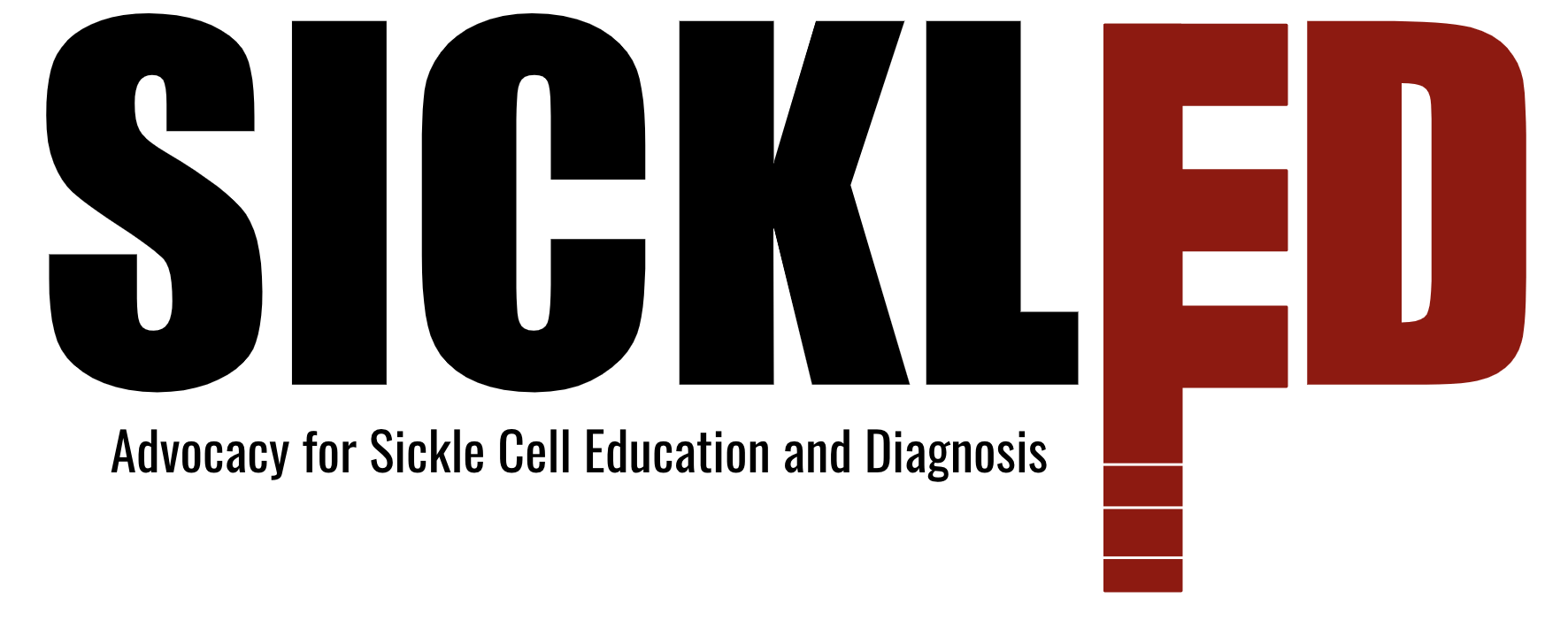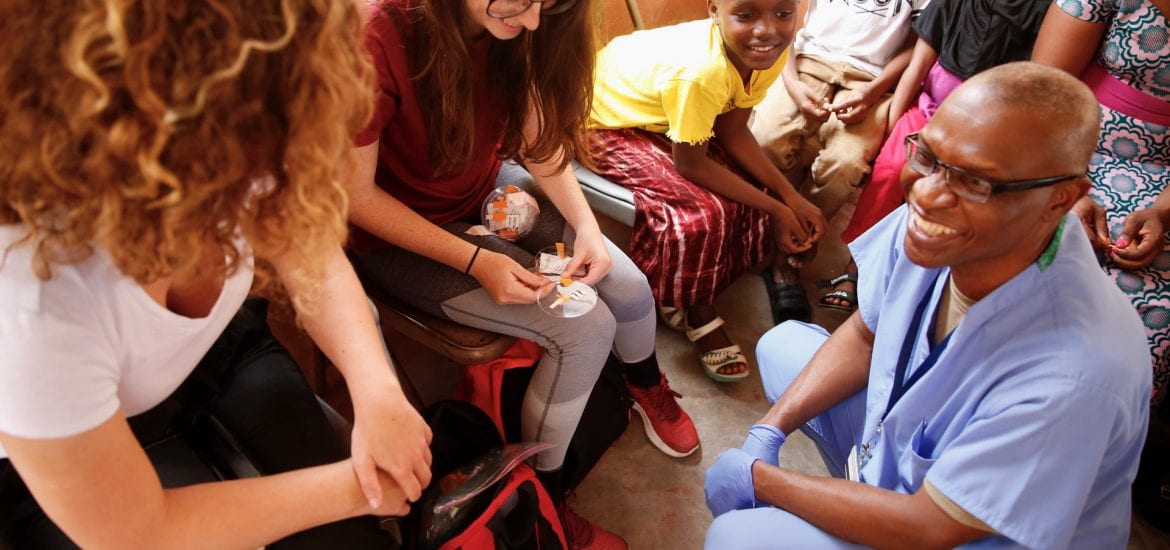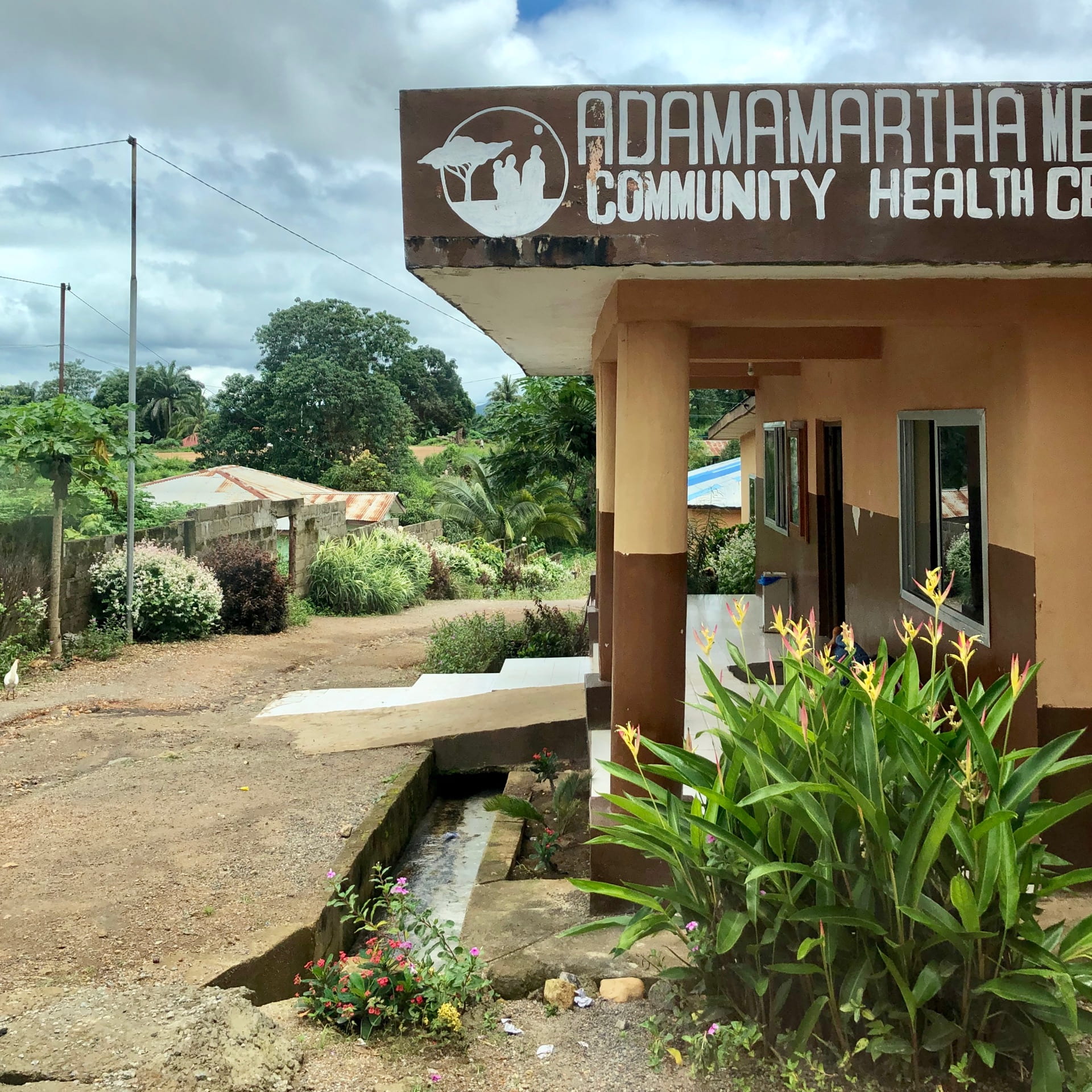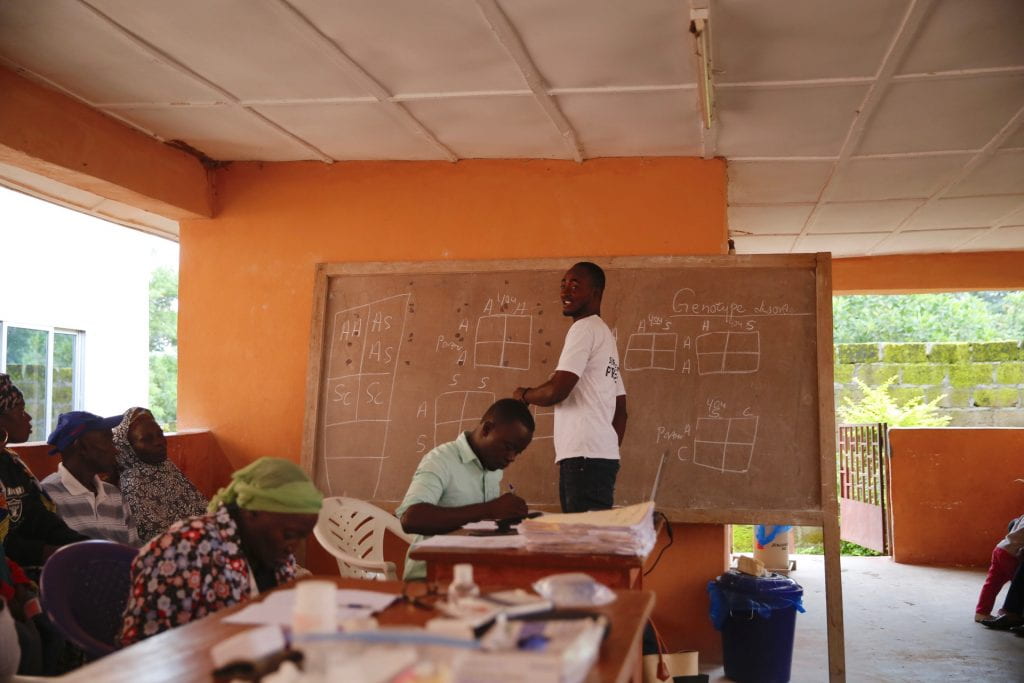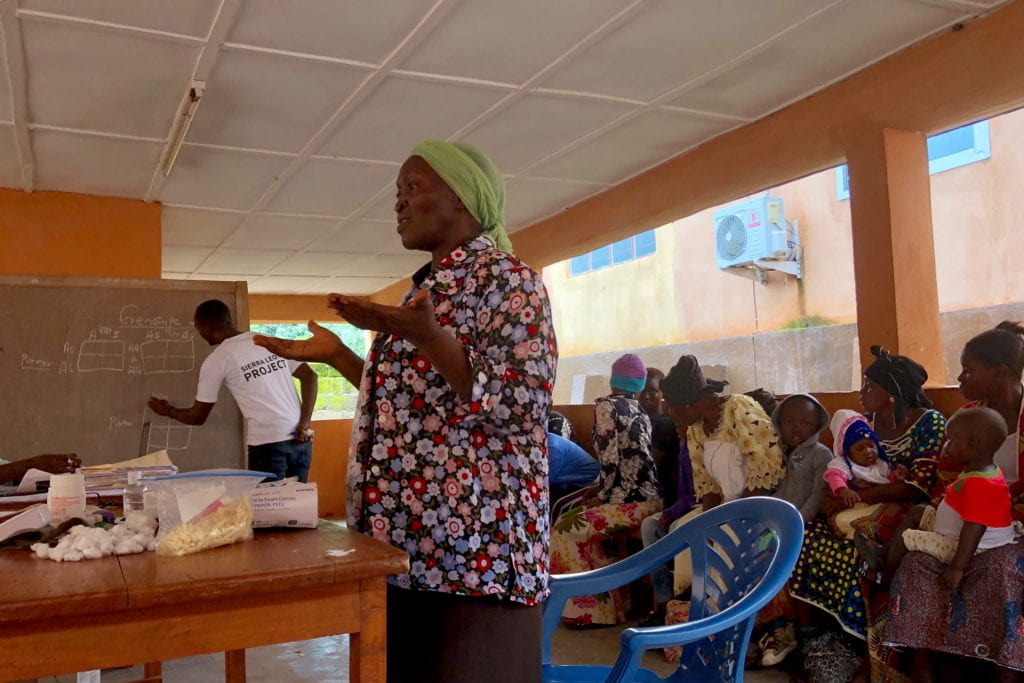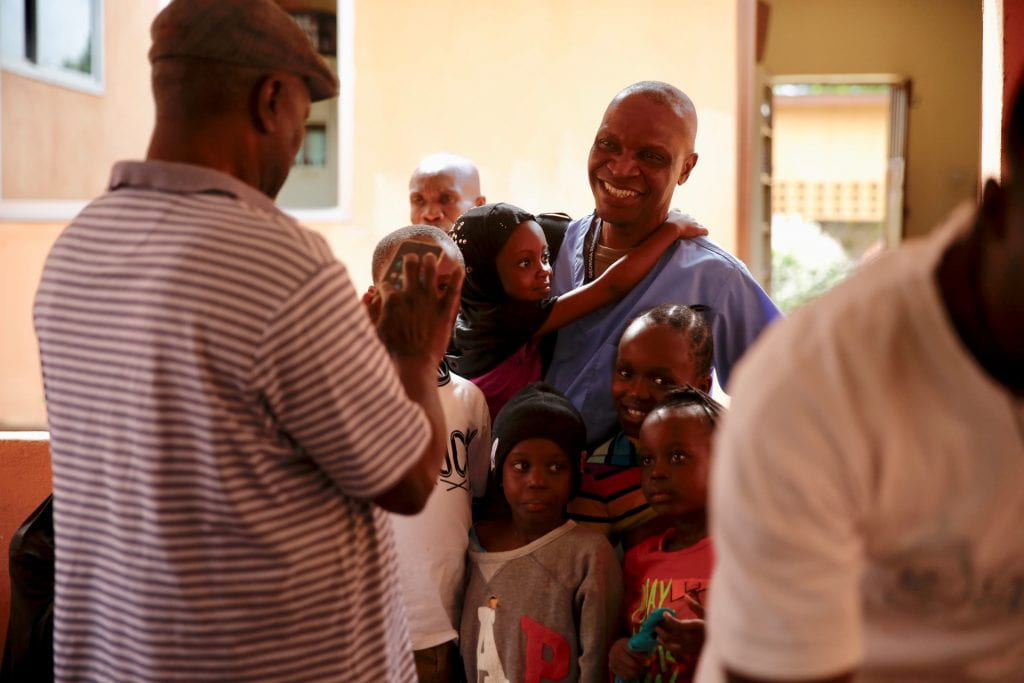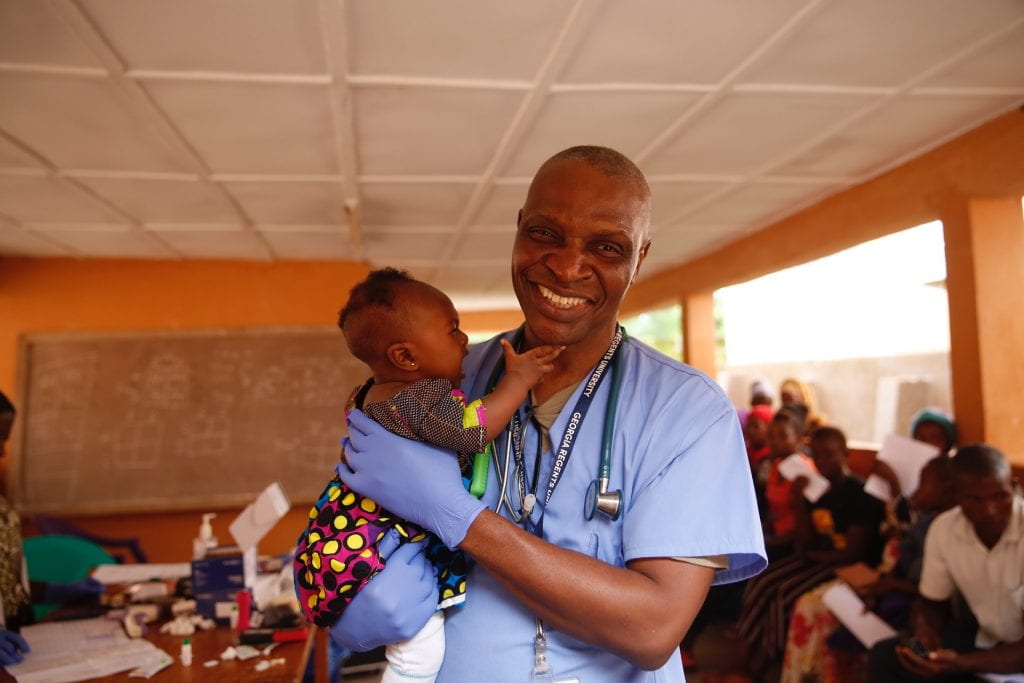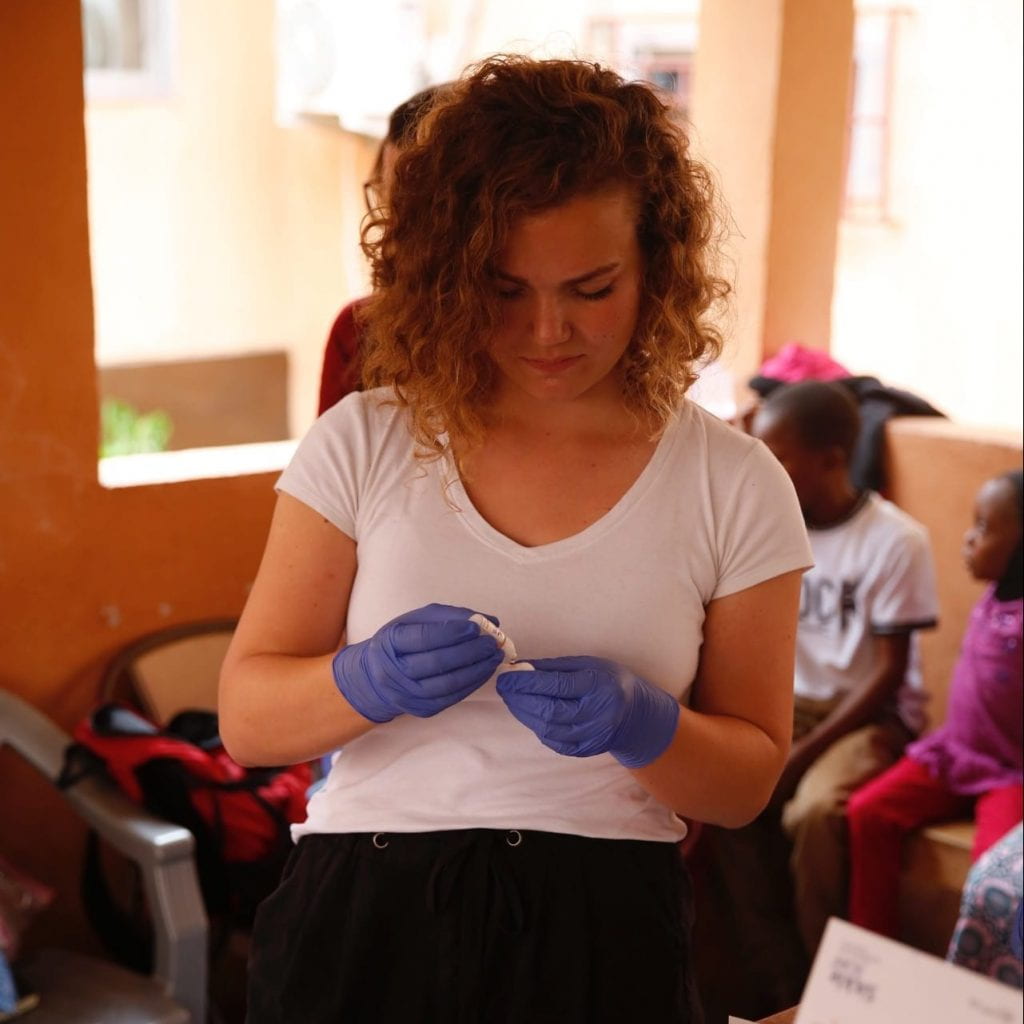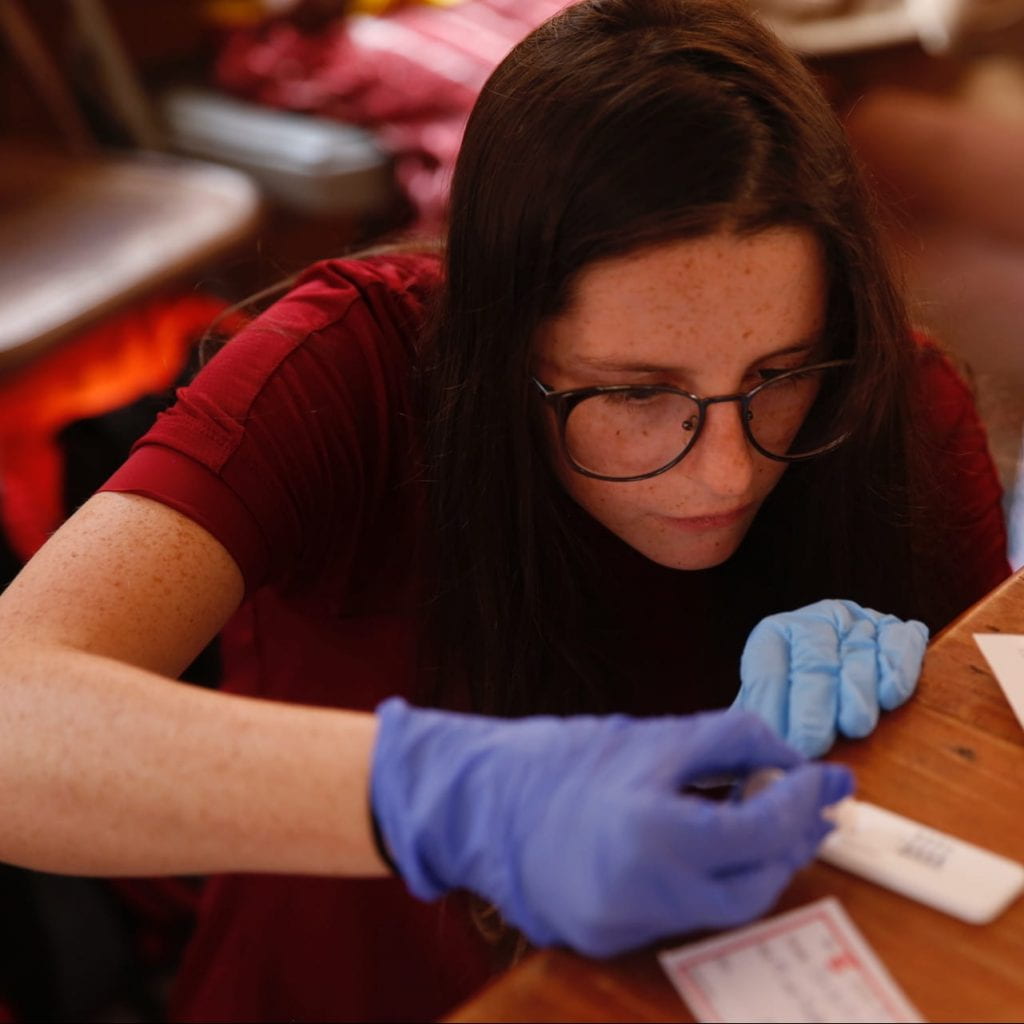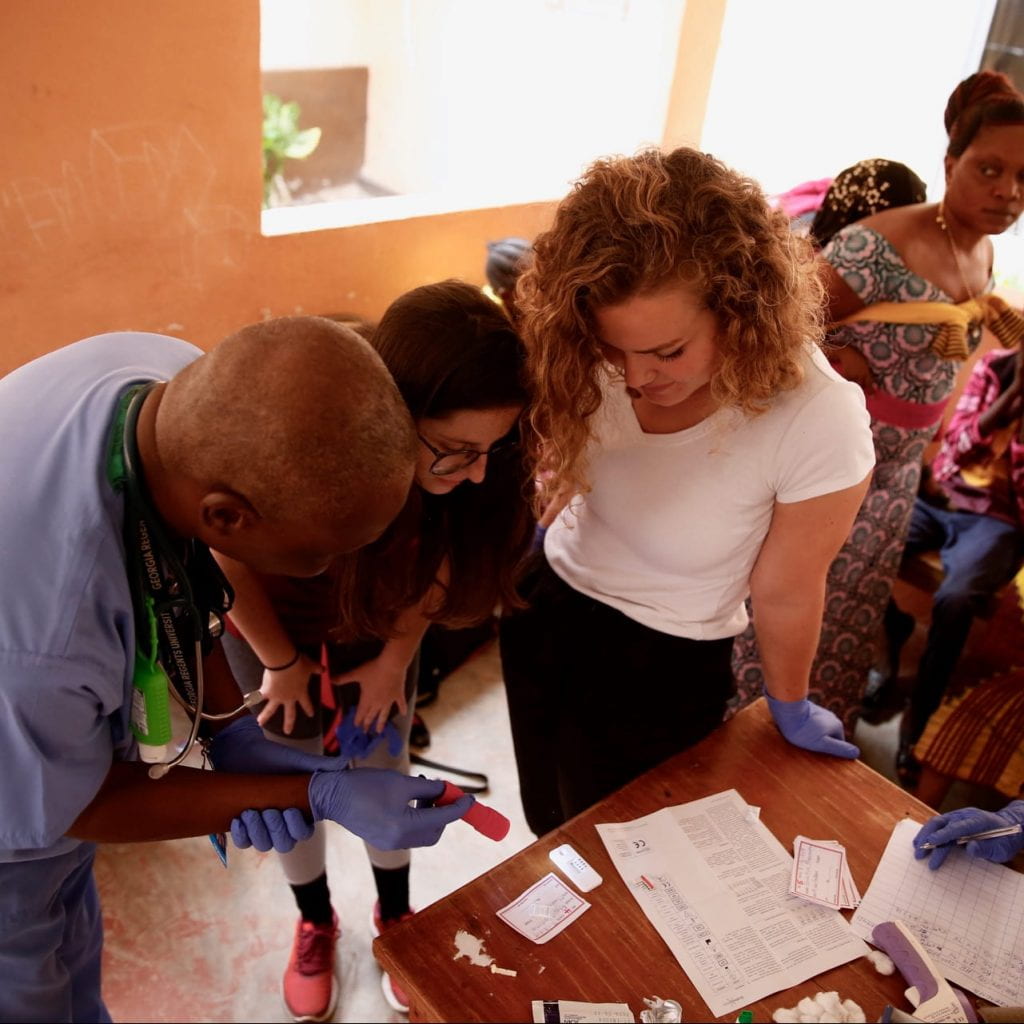Today we traveled 2 hours to Kono (in the Eastern Region of Sierra Leone) to visit Dr. Cheedy Jaja at the Jericho Road clinic (also known as the Adamamartha Memorial Community Health Center) in Koidu City. Dr. Jaja is a professor of nursing at the University of South Carolina, whose current work is focused on making sickle cell anemia screening in Sierra Leone accessible and commonplace.
When we arrived, we were greeted by the CHO, who took us to the sickle cell clinic area. Already, there were about 30 people waiting for treatment and screening. The CHO told us that the sickle cell clinic meets three times a week, from Wednesday to Friday, and offers a number of different services.
Currently, there are about 120 sickle cell patients who come in once a month for treatment. This treatment includes receiving vitamin C, folic acid, and penicillin prophylaxis (which they referred to as Pen VK). Although hydroxyurea is well known for reducing pain crisis and organ damage, they do not use it in that clinic because it requires regular follow ups and is hard to monitor within the current Sierra Leonean healthcare system (requires knowledge of biochemistry to prescribe the correct dose).
The patients also receive education, a general checkup, and access to additional treatments if needed (such as for a malaria infection). The education provided consisted of how to care for a child with sickle cell and genotype education (mono-hydride punnett squares). These patients also come into the clinic if they are having a pain crisis, in order to receive blood transfusions and/or supplemental oxygen.
The clinic also offers diagnostic services. Most of the patients who come for diagnosis are referred by the Koidu Government Hospital. This hospital offers a “sickling test” (solubility test) to patients with a family history and/or symptoms (especially pain crisis); however, this test cannot distinguish between sickle cell disease and sickle cell trait. Because of this, the patients must come to the clinic to confirm their diagnosis, receive counseling and education, and start a treatment plan. There is a registry of approximately 2,000 people who have received a positive sickling test in the area and are waiting to be genotyped.
Just after we arrived, the healthcare workers started educating the patients. They told them to drink lots of water, to stay warm, not to play too much, and to avoid stress to help prevent pain crises. They also encouraged the use of bed nets to avoid getting malaria, since having sickle cell disease increases ones risk for infection.
 After listening to the lesson, we were incredibly lucky to meet Sia Evelyn Nyandeno and her husband, the founders and national coordinators of Sickle Cell Carers Awareness Network (SCCAN). Sia told us the deeply saddening story about how she learned about sickle cell. You can read about her story here: http://sccan.org.uk/why-sccan-was-born/
After listening to the lesson, we were incredibly lucky to meet Sia Evelyn Nyandeno and her husband, the founders and national coordinators of Sickle Cell Carers Awareness Network (SCCAN). Sia told us the deeply saddening story about how she learned about sickle cell. You can read about her story here: http://sccan.org.uk/why-sccan-was-born/
She told us about how she moved back to Sierra Leone after learning about sickle cell in England, and explained to her town that it wasn’t witchcraft which was killing their children, it was sickle cell. At first the people did not understand. However, soon after arriving back in Sierra Leone, her and her husband started SCCAN, an awareness program that helps care for children and adults who suffer from sickle cell disease in Kono. Sia met Dr. Jaja on Facebook and asked him to come support the SCCAN program at the Jericho Road clinic.
Before interviewing her, she also spoke to the group of patients about our visit. She said that no one in the Western world knows about the problem of sickle cell, and that we came here to help. She told them that people like us will “write about it … they will address the issue like they did with malaria, HIV, typhoid…” After Sia finished addressing the patients, the healthcare workers started performing the monthly checkups, and Dr. Jaja arrived (who was immediate swarmed by the kids who were excited to see him).
Dr. Jaja currently uses SickleSCAN to diagnose patients at his clinic. SickleSCAN is a lateral flow device (like ours), which requires the blood to be diluted in a buffer before use. He allowed us to administer the device, and it was very easy to use; however, it costs around $6 per test. Another concern which Dr. Jaja has about the device is that it is advertised as being a newborn screening device. Newborns have very high levels of fetal hemoglobin, and do not start producing normal levels of adult hemoglobin (HbA or HbS) until around 6 months of age. Although studies have shown that the device does not cross react with fetal hemoglobin, Dr. Jaja thought there might be an ethical concern using it as a newborn screening device since there might be a higher level of false negatives than studies predict.
He also gave us a lot of information about sickle cell anemia in Sierra Leone. Currently, there are about 4-5,000 people in Sierra Leone with sickle cell, and 50-90% of those babies will die before the age of 5. Symptoms first start developing around the age of 6 months, when the body switches to producing adult hemoglobin. At this time, babies often present with swelling of the arms and legs, anemia, and frequent infections. Despite these early symptoms, and the later pain crisis, most children go undiagnosed. This gap occurs because sickle cell is a largely neglected health issue with many misconceptions. Additionally, many of the children die at a young age, before being diagnosed, because they are especially susceptible to malaria, typhoid, and other infections.
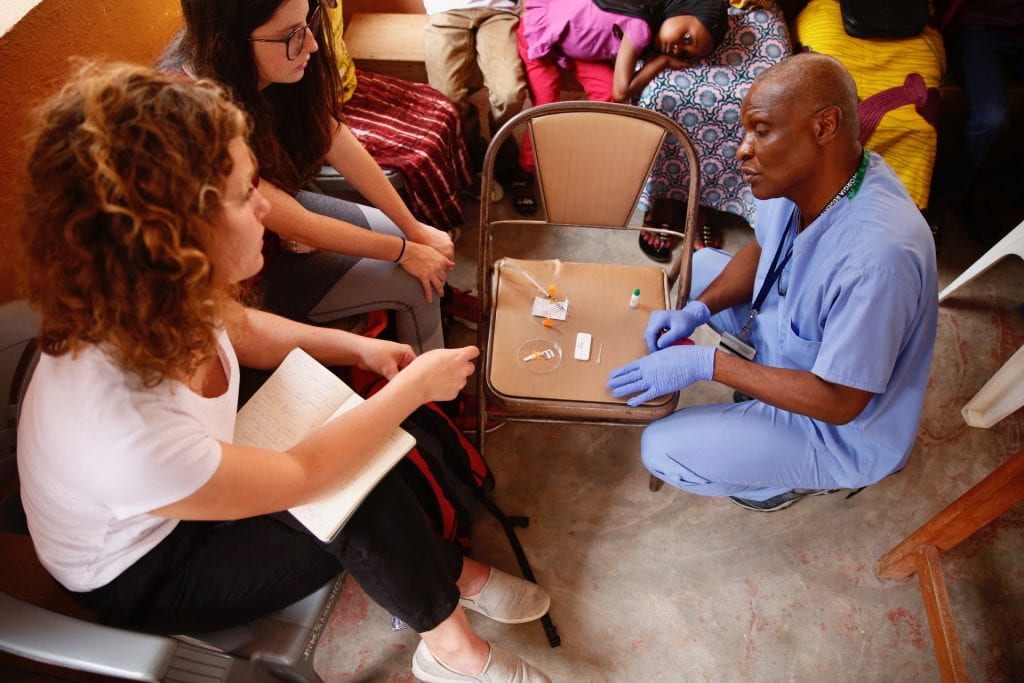 In addition to giving us all of this information, Dr. Jaja also let us show him our prototype. Despite being a very early-stage device, Dr. Jaja was very excited about our work. He agreed that “healthcare is a global responsibility,” and that more attention needs to be given to sickle cell. Additionally, because the many health care challenges in Africa compete for global attention, sustainable, low-cost options are vital. He also continuously stressed that sickle cell disease is a major, neglected problem, that it is not expensive to treat. All that is needed is early diagnosis and education in order to bridge the gap and help increase life expectancy.
In addition to giving us all of this information, Dr. Jaja also let us show him our prototype. Despite being a very early-stage device, Dr. Jaja was very excited about our work. He agreed that “healthcare is a global responsibility,” and that more attention needs to be given to sickle cell. Additionally, because the many health care challenges in Africa compete for global attention, sustainable, low-cost options are vital. He also continuously stressed that sickle cell disease is a major, neglected problem, that it is not expensive to treat. All that is needed is early diagnosis and education in order to bridge the gap and help increase life expectancy.
After showing us around the clinic, Dr. Jaja also showed us around the Koidu Government Hospital, where he worked during the ebola outbreak. Unfortunately, we didn’t have time to interview any of the healthcare workers, but after seeing the size and resources at the hospital, we realized that we would definitely have to organize an official visit to the Makeni government hospital in order to get an additional perspective on sickle cell.
After two days of having community heath officers at clinics tell us that sickle cell wasn’t a big problem in their area, it was reassuring to finally see the potential our project may have in the future. The conversations we had also stressed that our device would need to be implemented as part of a larger program, since very few people truly understand the symptoms, treatments, and prevalence.
* Thanks to Prof. Matt Veto for taking most of these pictures!
